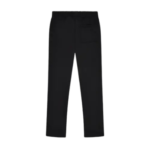Platelet-Rich Plasma (PRP) treatment has gained significant attention in recent years for its ability to aid in healing and rejuvenation. But what is PRP treatment exactly? PRP therapy is a procedure that uses your body’s own platelets to promote natural healing processes. Whether used in medical or cosmetic settings, PRP is becoming an increasingly popular choice for those seeking non-invasive solutions.
This guide breaks down the essentials of PRP treatment, explaining its benefits and answering the pressing question: how PRP works.
How PRP Works: The Science Behind the Treatment
PRP therapy leverages the body’s platelets, which are rich in growth factors that stimulate healing. But how does it all come together?
- Blood Collection: A small amount of blood is drawn from the patient.
- Centrifugation Process: The blood is spun in a centrifuge to separate its components, isolating the platelets.
- Injection: The concentrated platelets are injected back into the targeted area.
These platelets release growth factors that accelerate tissue repair, reduce inflammation, and promote cell regeneration.
Key Benefits of PRP Therapy
- Stimulates natural healing without the need for synthetic substances.
- Minimally invasive, with little to no downtime.
- Versatile enough to address various medical and wellness concerns.
Applications of PRP Treatment
1. Joint Pain and Sports Injuries
PRP therapy is widely used for treating joint pain and injuries, especially for athletes. The treatment accelerates healing in areas like:
- Torn ligaments or tendons.
- Chronic conditions such as arthritis.
- Post-surgical recovery.
2. Hair Restoration
Hair loss can be distressing, but PRP offers a promising solution. By stimulating dormant hair follicles, PRP therapy helps to:
- Increase hair density.
- Strengthen existing hair strands.
- Reduce further hair loss.
3. Skin Rejuvenation
For those looking to achieve a youthful glow, PRP is a natural alternative to traditional cosmetic treatments. It enhances:
- Skin texture and elasticity.
- Collagen production.
- Reduction of scars and fine lines.
What to Expect During PRP Treatment
Before undergoing PRP therapy, understanding the process can ease any concerns. Here’s a step-by-step overview:
- Consultation: A specialist evaluates whether PRP is suitable for your needs.
- Preparation: Blood is drawn and processed to isolate the platelet-rich plasma.
- Application: The PRP is injected into the targeted area using precision techniques.
Post-Treatment Care
- Avoid strenuous activities for 24–48 hours.
- Keep the treated area clean and follow any aftercare instructions.
- Mild swelling or redness is normal and typically subsides quickly.
Why Is PRP Treatment Gaining Popularity?
1. Natural Healing Properties
Because PRP uses the patient’s own blood, there’s minimal risk of allergic reactions. This makes it a safe and appealing option for many individuals.
2. Versatility
From aiding in recovery after injuries to enhancing skin health, PRP offers diverse applications.
3. Long-Lasting Results
While results may vary, many individuals experience significant improvements over several months.
Is PRP Treatment Right for You?
Not everyone is a suitable candidate for PRP therapy. People with certain medical conditions, such as blood disorders, should consult with a healthcare professional before considering the treatment.
Factors to Consider
- Your overall health and medical history.
- The specific condition or area you want to treat.
- Your expectations and treatment goals.
The Cost of PRP Treatment
The cost of PRP treatment can vary depending on the procedure and location. Factors influencing the price include:
- The area being treated (e.g., joints, hair, skin).
- The number of sessions required for optimal results.
- The expertise of the professional performing the procedure.
While PRP may be an investment, many patients consider the long-term benefits well worth the expense.
Common Myths About PRP Treatment
1. “PRP Is Painful”
The procedure involves minimal discomfort, as numbing agents are often used during the injections.
2. “It’s Only for Athletes”
While PRP is popular in sports medicine, its applications extend far beyond athletic injuries.
3. “Results Are Instant”
PRP stimulates gradual healing, so noticeable results may take weeks or months to appear.
Tips for a Successful PRP Experience
To maximise the benefits of PRP therapy, keep these tips in mind:
- Choose an Experienced Practitioner: Ensure the specialist is well-trained and experienced in PRP procedures.
- Follow Post-Treatment Instructions: Proper aftercare can enhance the results of the treatment.
- Be Patient: Results may take time, but the healing process is worth the wait.
Conclusion
PRP treatment is a groundbreaking approach that harnesses the body’s natural healing capabilities. Whether you’re dealing with chronic pain, hair loss, or skin concerns, PRP offers a versatile and minimally invasive solution.
By understanding what is PRP treatment and how PRP works, individuals can make informed decisions about their health and wellness. The treatment’s growing popularity is a testament to its effectiveness and potential to improve quality of life.
If you’re considering PRP therapy, consult a trusted professional to explore how it can address your specific needs. With its wide range of applications and natural benefits, PRP continues to revolutionise the way we approach healing and rejuvenation.
For more insights on PRP treatment, Accretion Portal is your go-to source for expert information and guidance.


